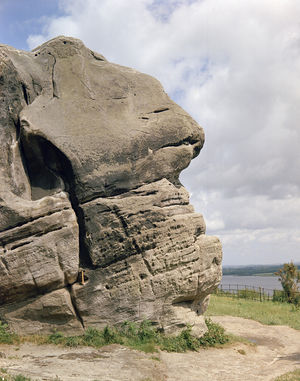Category:14. Wealden district

This account provides a broad perspective of the geology of the Wealden region of south-eastern England, which extends from Kent westwards into Surrey and Sussex, and includes the eastern part of Hampshire. The area is predominantly rural. The principal towns and cities include Dover, Folkestone, Canterbury, Maidstone, Eastbourne and Brighton. Figure P902277 provides a geological sketch map of this region showing the rock types occurring in relation to the major towns and cities. This account outlines the geology to a depth of at least a kilometre and summarises the current and historical use of the geological resources in the region.

The region is mainly formed of rocks laid down in seas that covered the area in the past. The relatively flat landscape is typical of areas underlain by these sandstones, clays and limestones. Even in the downlands and the High Weald, where the highest land rises to more than 200 m above sea level, the rocks are very rarely exposed at surface: the principal exception is the sandstones of the High Weald (Plate P209919). Nevertheless, the surface geology is well-known from quarries and other surface excavations, sea cliffs, shallow boreholes, water wells and changes in soil type.
At depths greater than about 300 m below surface, however, our knowledge depends largely on deep boreholes drilled in the search for water, coal, oil, gas or gypsum resources. There are about 200 such deep boreholes in various parts of the region, of which about half are more than 1000 m in depth. Most are in either the central or western parts of the region, where prospects for oil or gas are most promising, or in east Kent within the area of the coalfield that is concealed beneath that part of the North Downs. There are few deep boreholes in northern Kent. Numerous geophysical seismic surveys have been conducted, covering most of the region except for parts of the extreme north-east (broadly speaking eastwards from the Medway towns), which provide information on the rocks by sending sound waves through the ground. The results of these investigations are complemented by interpretations of the patterns of variation in the Earth’s gravity and magnetic fields shown by regional geophysical maps.
Coal was mined from depths between about 300 and 950 m at several sites in east Kent during the late 19th and the 20th centuries, with the last colliery closing in 1989. Oil and gas are currently extracted at several sites in the west of the region, typically from depths of more than 1 km, and other parts of the region may have oil or gas in sufficient quantities to make extraction economical. Gypsum, which is used as a fertiliser and the main constituent of many forms of plaster, is mined at depths of about 300 m in a small area of East Sussex.
Subcategories
This category has only the following subcategory.
The number of included categories (C), pages (P) and files (F) is stated in brackets.
- Wealden district - summary (4 P)